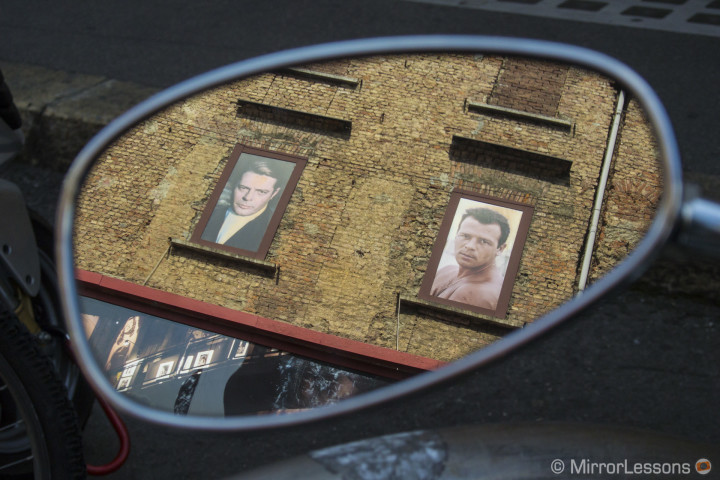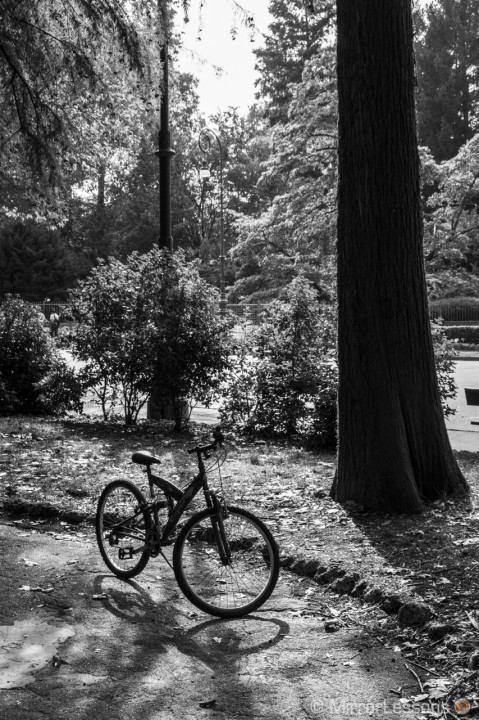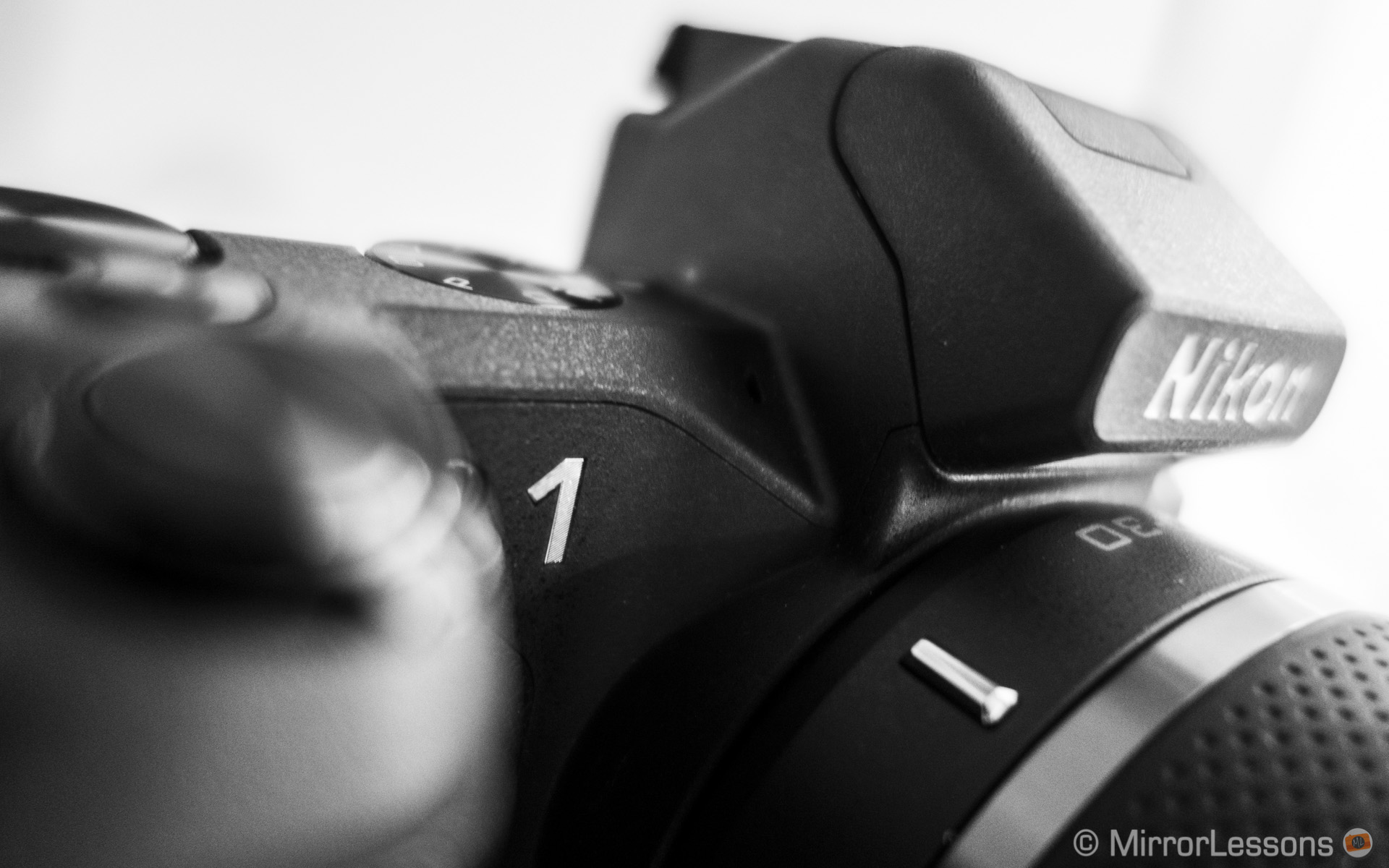The Nikon 1 system was officially announced back in September 2011, and I have always found it intriguing. The Japanese firm created something different from any other mirrorless interchangeable-lens camera (or Compact System Camera as the firm prefers to call it) on the market by concentrating all its efforts on speed and performance. However, despite the initial popularity of the system, two years down the road Nikon is rumoured to be re-thinking the entire line because of its poor sales (especially in Europe and America). For such a new system, it almost sounds like a defeat. But is the Nikon 1 system really that bad? I finally got the chance this past weekend to try out the V2 and get a sense of the pros and the cons of the system.

NIKON 1 V2, 1/1000, f/ 5.3, ISO 200

NIKON 1 V2, 1/20, f/ 6.3, ISO 3200
The Nikon 1 V2 is the flagship of the series. The reason its almost “mini-DSLR” design diverges so much from the previous V1 is because users had requested better ergonomics and more “professional” control such as an aperture/shutter speed control dial, a function button and a built-in flash.
It features a CX sensor (x2.7 crop factor) with 14.2 megapixels. Its performance and speed characteristics are quite unique. The V2 can shoot up to 60fps in RAW+JPG, has innovative hybrid video/still functionalities and even a slow motion option for video at 400fps or 1200fps. While not all those features produce the image quality one might desire, there isn’t another camera out there capable of this kind of speed and performance.

Nikon 1 V2 Main Specs
- Sensor: 14.2 megapixels CX CMOS Sensor
- Lens system: interchangeable (Nikon 1 mount)
- ISO Sensitivity: 160 – 6400 ISO
- Min/Max. shutter speed: 30″ to 1/4000s (mechanical), 30″ to 1/16000s (electronic)
- Continuous shooting: approx. from 5 fps to 60fps
- Autofocus: Hybrid (phase-detection/contrast-detect AF) with 135 focus points
- Focus Peaking: No
- Internal Stabilisation: No (VR in the lenses)
- Viewfinder Yes (electronic LCD with 1440k dot approx.)
- LCD Screen: 3.0-inches LCD monitor, approx. 920k dots
- Movie recording: Full HD in MOV format (up to 30p or 60i) with slow motion capabilities (400fps and 1200 fps at lower resolutions)
- Weather-sealed: No
- Built-in Flash: Yes
- Built-in Wifi: No
- Extras: Motion snapshot, smart photo selector
- Dimensions: 107.8 x 81.6 x 45.9 mm (4.2 x 3.2 x 1.8 in.)
- Weight: Approx. 337 g (11.9 oz)
The most approachable camera I’ve ever used
Ergonomic & Functionality

The Nikon V2 looks like a mini-DSLR, with a more simplistic design. That simplicity is also found in its functionality. The Nikon V2 features only the essential buttons and dials needed to quickly select your shooting mode, and adjust aperture and shutter speed with the command dial and the multi selector wheel on the rear. You can adjust the main settings such as ISO or WB with the Fn button. The settings are displayed on the four edges of the screen, so that you can still clearly see your composition.

If you want to adjust other settings, you can access the menu with the second button on the rear left. Knowing Nikon DSLR menus very well, I was surprised at first by the minimalistic and flat design of the Nikon 1 menu system. This said, you get used to it very fast and it is very easy to navigate, also because depending on the shooting mode chosen, the menu will only display the settings relevant to that mode. You won’t have more than three categories for each menu, and therefore you won’t risk navigating it for hours until you find the setting you want.

The only part I’m not overly struck on is the command dial as it feels too smooth when you turn it. But it is the only complaint I can really think of.

The body is made of plastic but feels robust. The kit lens that comes in the package is also made of plastic but has a nice rubber ring that is pleasant to turn.

More than satisfying image quality, but we need faster aperture lenses
One of the main negative reactions to the Nikon 1 was its small 1-inch sensor. Being smaller than MFT and APS-C, a lot of people simply didn’t give the system a chance. In my personal experience, a small sensor has never been an issue and even though two days aren’t enough to judge a camera, there is nothing that I can really criticise when it comes to the image quality of the V2.

The camera shoots in both RAW and JPG format and delivers very nice files to work with. With a small sensor like the CX, it is better to work with the RAW files as you will have more dynamic range and colour accuracy.

The limit of working with a 1 inch sensor is highlights: the amount of recovery is limited compared to larger sensors, so you have to be careful not to overexpose your pictures too much. Colour reproduction is nice and in line with other Nikon cameras. I find Nikon colours slightly cooler than other cameras, but it is not necessarily a negative point and it also depends on the personal taste of the photographer.

The V2 defends itself very well in terms of low-light performance as well. The camera goes up to 6400 ISO, which probably doesn’t make it a reference on the market anymore. (The Sony RX100M2 with the same sensor size has better ISO performance but is also more recent).

3200 ISO is perfectly usable, and even if you don’t have a fast aperture lens, taking advantage of the great lens’ stabilisation (VR) you will be able to take sharp pictures with a slow shutter speed and therefore keep your ISO level down. During my visit to the Automobile National Museum, I set ISO to Auto and the camera never went up to 6400.


While the image quality produced by the camera is definitely good, I think that one of the biggest limits of the Nikon 1 system is the lenses. The 10-30mm kit lens is fine but just like every other kit lens–it will do the job but you can’t expect much more from it. Obtaining a shallow depth of field is nearly impossible unless you focus very close to an object.

Since 2011, Nikon has released three primes with a fast aperture: the 10mm f/2.8, the 18,5mm f/1.8 and the recent 32mm f/1.2 that is the equivalent of a portrait lens and is perhaps the most interesting lens for the Nikon 1 system. Unfortunately, I wasn’t able to try it and it is also expensive at around $900.
A partial solution to this lack of lenses is to use the FT-1 adapter for Nikkor DSLR lenses. You can basically use all the Nikon lenses for both DX and FX format. Note that with the older ones, you won’t have autofocus but with the most recent lenses (all those in the AF-S line that have a built-in focus motor) you will. The autofocus isn’t as fast as with Nikon 1 lenses, but still remain pretty decent.
The first example below was taken with a Nikkor 85mm f/1.4 AF-D. Since the lens is lacking a built-in focus motor, the camera helps you manually focus by indicating with two arrows which direction to turn the focus ring. A green dot appears when the subject is in focus.

Like the 32mm 1 lens, using the adaptor and Nikkor lenses is another “niche” solution in my opinion. Unless you are already a Nikon DSLR user, I don’t really see the point of carrying around camera that is supposed to be compact with big and heavy lenses that weren’t designed for it.
The only real purpose of having such as combo is to use the 2.7 crop factor for amateur wildlife photography for example. If you mount a Nikkor 70-300mm f/4.5-5.6 for example, you will get an equivalent focal length of 189mm to 810mm. Just to give you an idea, you can see an example below that shows how far you can go. The picture isn’t great but it gives you an idea. It was shot hand-held but a tripod is highly recommended in this case.
This example was taken with a Nikkor AF-S 70-300mm f/3.5-5.6 VR. I also included a quick picture taken with the iPhone to help you understand how far that butterfly was away from the lens…


It is a nice option but unless you have a specific purpose like shooting the moon, you won’t buy expensive DSLR lenses just for that. And if you already own some of them, you’ll probably buy a Nikon 1 camera to have a smaller alternative to carry around during your free time without the bulk of large lenses.
Speed and performance, this is what the Nikon 1 system is all about!
I personally don’t bother too much with lens performance limitations regarding bokeh or depth-of-field because the Nikon 1 system’s real purpose in life is to be the fastest camera ever.

The autofocus is fast and I mean really, really fast. If I’d had more time with it, I probably would have made a comparison between it and the Olympus MFT cameras. I think that the Nikon 1 AF is at the same level of the E-M5 or Pen E-P5, and my feeling was that it could be even better in low-light.
Walking around the Automobile Museum, which is very dark, I never, and I mean never had a problem with the AF, and the time it took to focus in the dark was really impressive.
I think that its only weak point for AF, if we want to be picky, is the “macro” mode when used with tiny objects close to the lens. But that aside, it is probably the best AF for mirrorless cameras out there.
The camera can shoot up to 60fps for a short period of time in both RAW+JPG. This is another impressive feature. Below I created a short animation with all 60 JPGs on-camera. It is as fluid as a proper slow motion video.
Of course the buffer capabilities are limited as the camera writes such an impressive amount of data in a short time, so it will require the user to release the shutter button at the right time. To help you with that, Nikon created a feature called Smart Photo Selector. The camera takes a series of pictures at a very high frame rate. The camera then selects the five best photos.
Even more impressive is that, if you don’t want to choose, you can select the slow view mode: the camera will take 20 consecutive shots and then play them back in a loop in slow motion, so that you can select your favourite by pressing the shutter button again. It is easy and will help avoid group photos where one person has his or her eyes shut. Personally, I find this second option works much better than the first. Even with the most intelligent cameras out there, there will still be moments when the camera can’t catch the smile of your wife or child.
The fact that you can view that instant in slow motion is probably the coolest feature of the Nikon V2 and the 1 system in general.
Another interesting feature is the Motion Snapshot, where the camera combines a short slow motion video, a still picture and music in the background.
Below you can watch two examples:
I find the idea very interesting and close to the concept of “hybrid photography” (if you don’t know what it is, google it and put Giulio Sciorio’s name in the search box). The problem with it is that the amount of time recorded is short, so again you have to capture the right instant (but that’s what photography is all about anyway, isn’t it?). There is also a decrease in image quality.
I find it interesting but perhaps Nikon should think of enriching it with more selectable background music. There are only four and they sound like a midi ringtone from a mobile phone. Also, it would be nice to have a slightly animated picture at the end, or to be able to choose a longer recording time for video (max. is 1,6s) and maybe blend two or three stills within. Or even better, allow the user to perform real “live editing” during the shooting, allowing him to merge two or three different points of view in the final movie. That way, you could be much more creative.
Finally there is the standard video function that has the option of slow motion up to 400fps or 1200fps. In 1200fps, the quality is very poor and the camera is only able to record at 320 x 120 pixels, which is way below standard definition. At 400fps, the video size is 640×240 which is acceptable. Note that in slow motion, the format is very panoramic and not the standard 16:9 aspect ratio.
Here as well, there is a duration limit. It is a shame that image quality isn’t enough. It might have been better to put 200fps and 400fps as options and keep the image quality higher.
Conclusion: is the Nikon 1 system underrated?

Yes, in my opinion, as I think that its small sensor discourages too many users from giving it a chance. The reason you purchase a Nikon 1 camera is for its amazing autofocus and speed performance. The question is, why hasn’t it been getting enough sales?
It is hard to give a proper answer to that, but I’ll try. Keep in mind that this is a list of my own personal opinions:
- Price: when the first cameras came out, they were very expensive. Since then, Nikon has dropped prices a lot trying to encourage buyers but generally, price dropping does not instil confidence in people
- Build quality: the V2 is very well-built, but the “entry level” models such as the S1 feels too plastic. I remember having a very bad impression of it at the Milan Photoshow.
- Some of the most innovative features such as Motion snapshot are too probably too basic and look like one of those extra additions a lot of cameras have but almost no one uses. The only real useful feature is the slow view mode, but can one mere feature convince someone to buy a camera? After all, what people usually do is take a picture, play it back right away and take a second one if the first is bad. People who use cameras for family pictures want to grab memories, nothing else.
Perhaps that need for speed is something a casual amateur doesn’t need or doesn’t care about.
There are two sides to the Nikon 1 coin. It is very easy to use, but also incorporates very advanced features that only high-end cameras possess. It is a very advanced camera for amateur users, but the advanced amateur will be put off by the sensor size, while the casual amateur will fixate on the hefty price tag and probably won’t understand half of the speed features the camera has to offer. And it is a shame, really, because the Nikon 1 system is definitely one of the most interesting that has been introduced in the last few years.















